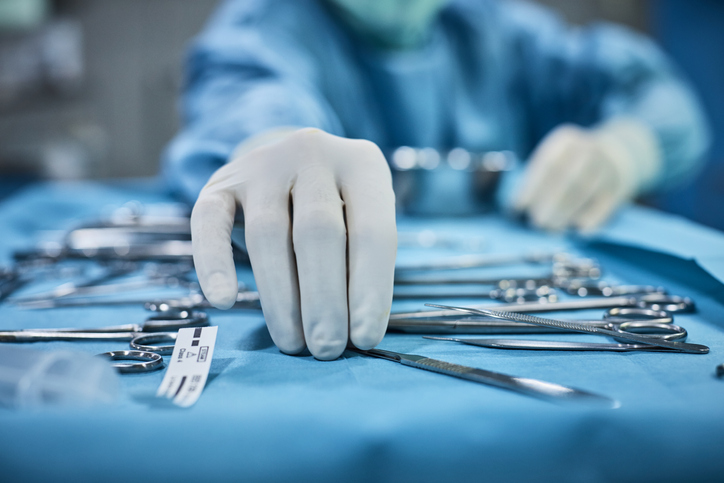
The performance of anesthesiologists, surgical teams, and perioperative systems is commonly measured by the percent of first case on time start (FCOTS) and by first case start delay (FCSD) time (1). First case start delay is one of the factors that contributes to Operating Room (OR) inefficiencies, and can have a high impact on patient satisfaction, particularly for those who are fasting and continuing to wait for surgery (2). Under the Dutch OR Benchmarking initiative, for instance, van Veen-Berkx et al. reported a figure of more than 50,000 minutes lost annually per OR due to surgeries starting late. Similarly, in Germany, more than 70% of general surgery and trauma/orthopedic cases started late in 2011 (2). Metrics such as FCOTS are increasingly being used as measures of individual performance, especially that of anesthesiologists. However, sub-specialization of anesthesiologists across divisions of surgical subspecialties, patient disease severity, and service tracks within a practice group may confound individual measures of FCOTS performance. At the Children’s Hospital and Medical College of Wisconsin, Hoffman et. al conducted a study to examine the effects of patient and system factors on individual-level FCOTS performance measures (1).
To begin, Hoffman et. al extracted anesthesia process and performance data from the perioperative anesthesia data warehouse for all cases from 2013-2018 at the Children’s Hospital of Wisconsin and its surgical center. Primary outcome measures were FCOTS percent and FCSD minutes for individual anesthesiologists, with modifiers of patient age and complexity (according to the ASA physical status classification system), primary surgical service, duration of anesthesia and recovery. Balancing measures of anesthesia procedural intensity, process safety measures, and mortality were also included. Additionally, all data were de-identified prior to export for analysis (1).
After analyzing data from 139,586 cases for 50 anesthesiologists, it was determined that the median individual FCOTS was 63% and the median FCSD was 6.4 minutes (1). There was a strong relationship between delay minutes and FCOTS% (0.2 minutes/percent, r2=-0.70), suggesting a predominance of non-anesthesiologist factors related to delays. The FCSD was strongly related to ASA-PS (2.9 minutes/ASA-PS class, r2=0.16) and anesthesia case time (0.04 minutes/case minutes, R2=0.22). Anesthesiologist exposure to percent of first cases of the day (FCOD) ranged from 12-100%, and median ASA-PS ranged from 1.47 – 3.35. In summary, Hoffman et al. arrived at the conclusion that patient and system factors do indeed contribute strongly to first case on time start performance of anesthesiologists. They also note that exposure to these factors must be accounted for when benchmarking individual performance (1).
With this in mind, there are some ways in which first case start delays and performance can be improved. In 2014, Ramos et al. undertook a study to reduce first case delays at the Hospital das Clinicas of the University of Sao Paulo, the largest public hospital in Latin America (2). They implemented changes focused on increasing care coordination between the OR and the inpatient and ICU units, namely by standardizing patient OR admission using a pre-operative checklist and reducing the uncertainty for post-op ICU availability. These changes resulted in more than 55,000 minutes of OR time saved in one year, which may represent an economy of more than 150,000 USD (2). In the U.S, a Rapid Process Improvement Workshop (RPIW) team at the Dartmouth Hitchcock Medical Center was able to increase their FCOTS % by assessing barriers to prompt first-case starts and redesigning the workflow of patient preparation. One of the changes made, for example, was that OR nurse visits were implemented as the first task, rather than occurring just prior to patient transport. The Dartmouth study improved first-case on-time starts after 16 weeks to 75 percent and the average delay decreased from 7.2 minutes to 4 minutes. All in all, the Dartmouth case study estimated that an improvement to greater than 80 percent on-time starts would result in increased patient and staff satisfaction and nearly $2 million a year in combined cost saving in overtime pay, additional cases and increased revenue, demonstrating the importance of dealing with patient and system factors in first case start delay (3).
References
- Hoffmann, G., Scott, J. P., & Berens, R. J. (2019, October 19). Patient and System Factors Affecting Anesthesiologist First Case Start Performance. Retrieved from https://www.abstractsonline.com/pp8/#!/6832/presentation/6140.
- P. Ramos, E. Bonfá, P. Goulart, et al. First-case tardiness reduction in a tertiary academic medical center operating room: a lean six sigma perspective. Perioper Care Oper Room Manag, 5 (2016), pp. 7-12
- On-time operating room starts can be improved, increasing patient/staff satisfaction and cost savings. (2013, October 15). Retrieved from https://www.asahq.org/about-asa/newsroom/news-releases/2013/10/on-time-or-starts.

